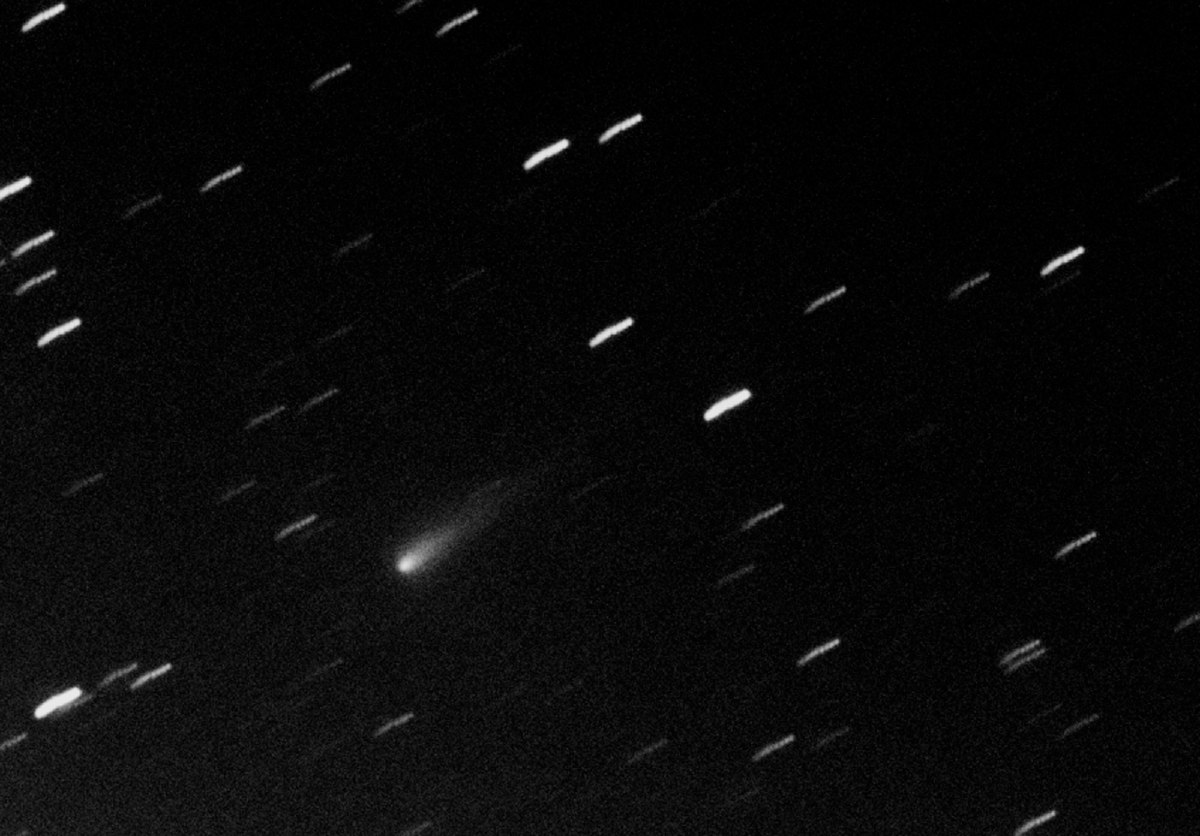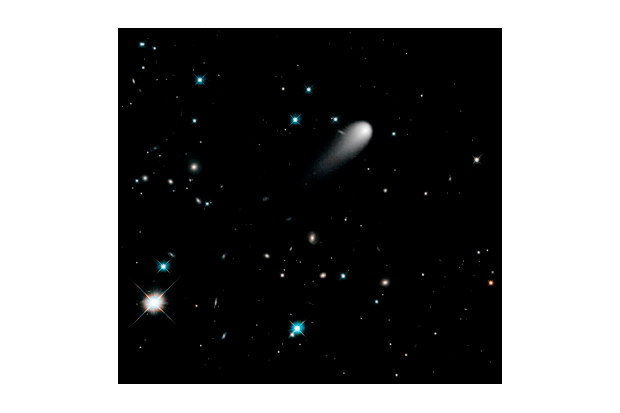Mars Spacecraft to Photograph Comet ISON's Red Planet Flyby Next Week

The potentially dazzling Comet ISON was discovered exactly a year this month, and now a fleet of spacecraft is gearing up to track the icy wanderer during its close encounter with Mars next week.
Comet ISON was discovered by Russian amateur astronomers on Sept. 21, 2012 and has since been billed by scientists as a potential "comet of the century" if it survives an extremely close brush with the sun later this year.
Next Tuesday (Oct. 1), the Comet ISON will fly by Mars at a range of 6.5 million miles (10.4 million kilometers). The European Space Agency's Mars Express spacecraft should have a good view of the flyby. The orbiter began its observation campaign on Sept. 21. [Photos of Comet ISON: A Potentially Great Comet]
Over the next two weeks, Mars Express will snap photos and analyze the composition of the Comet ISON's brightening coma, the atmosphere that surrounds the comet's rock-and-ice nucleus, ESA officials said in a statement. The coma of a comet becomes more prominent as its surface ices are heated and vaporized, with the dusty debris being swept back into a tail.
Meanwhile, NASA's Mars Reconnaissance Orbiter, another spacecraft exploring Mars, is set to track Comet ISON’s Mars flyby on Sept. 29 and Oct. 1 and 2. ISON may even bright enough for NASA's Mars rover Curiosity to see it from the surface of the Red Planet as it whizzes by.
Comet ISON, officially known as C/2012 S1, was discovered on Sept. 21, 2012 by Russian amateur astronomers Artyom Novichonok and Vitali Nevski, who used a remotely operated telescope to detect the comet in the dim constellation of Cancer. On Nov. 28 of this year — Thanksgiving Day in the United States — ISON will skim just 730,000 miles (1.2 million km) or so above the sun's surface.
If the sun-grazing comet doesn't get ripped apart by extreme solar forces, some astronomers have said it could be the "comet of the century," possibly shining brightly enough to be seen during the daytime as it heads back into the outer reaches of the solar system. NASA scientists have warned that predictions of how bright Comet ISON will be are still uncertain, and that the comet could fizzle if it breaks apart.
Breaking space news, the latest updates on rocket launches, skywatching events and more!
When the comet whips around the sun, solar telescopes like the Solar and Heliospheric Observatory (SOHO), a joint mission by NASA and ESA, will watch out for the celestial spectacle. The European-built Venus Express now orbiting Venus and Proba-2 in Earth orbit will also target the comet during November and December.
Since those spacecraft are designed to observe planets and not distant comets, ESA said it is not clear how their observations will turn out. But the comet has already yielded some amazing images captured by both amateur astronomers on the ground and sophisticated spacecraft like the Hubble Space Telescope, also operated by NASA and ESA.
Follow Megan Gannon on Twitter and Google+. Follow us @SPACEdotcom, Facebook or Google+. Originally published on SPACE.com.

Megan has been writing for Live Science and Space.com since 2012. Her interests range from archaeology to space exploration, and she has a bachelor's degree in English and art history from New York University. Megan spent two years as a reporter on the national desk at NewsCore. She has watched dinosaur auctions, witnessed rocket launches, licked ancient pottery sherds in Cyprus and flown in zero gravity on a Zero Gravity Corp. to follow students sparking weightless fires for science. Follow her on Twitter for her latest project.

